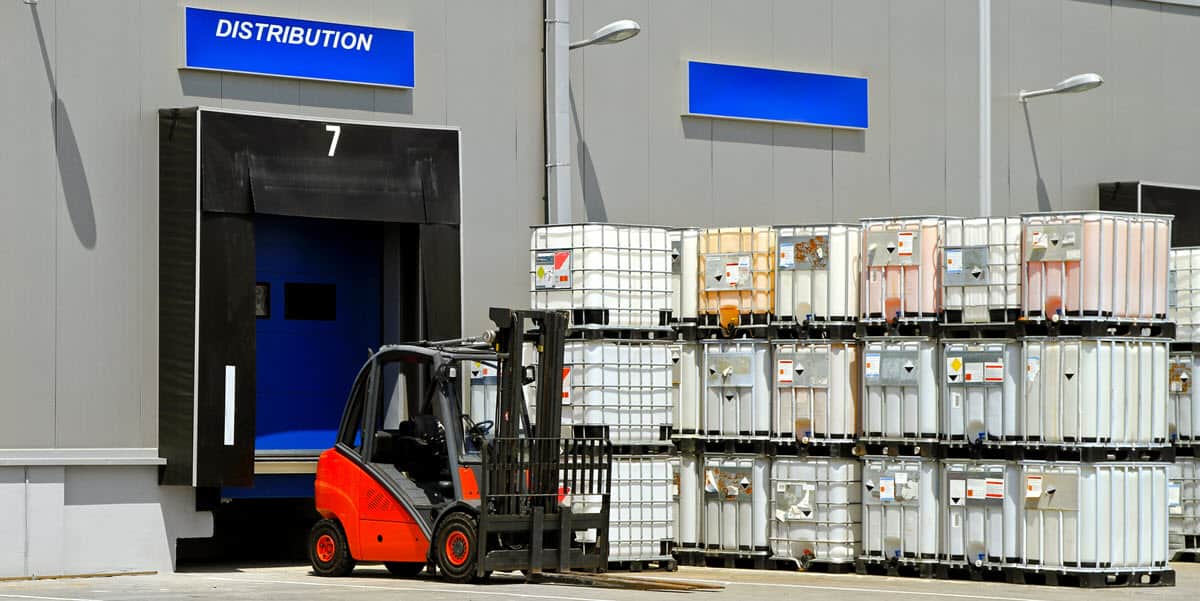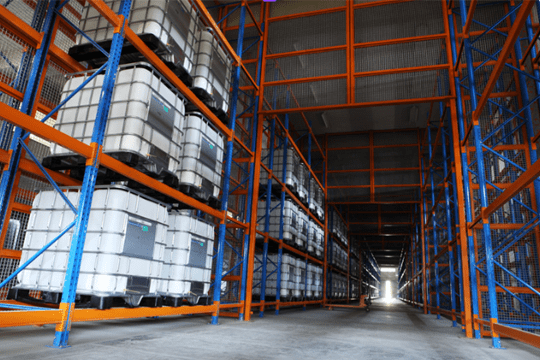Stainless Steel IBC Totes
Stainless steel totes are a type of IBC made with super-strong stainless steel. This material makes these tanks a very effective solution for storing and transporting bulk chemicals and materials, both hazardous and non-hazardous, flammable and combustible materials, solids, and more. These steel totes are cube-shaped, making them easy to stack and haul wherever needed.
A stainless steel IBC tote can carry all sorts of compounds and materials, including dense, corrosive, reactive, and acidic. They can be used across several industrial and manufacturing processes. They can be used for petrochemicals, mixing and blending, food manufacturing, beverages, wines, and spirits, as well as paints, pharmaceuticals, and more. These steel containers are also certified to ship via air, rail, sea, and motor vehicle.
Steel chemical tote capacities range from 110 gallons to 550 gallons.
Some of the key features of steel IBC tanks that make them the best choice for many manufacturers include:
- Advanced chemical resistance allows these tanks to withstand corrosion and safely store and transport food and consumables.
- Self-repairing chromium oxide to better prevent rusting.
- Excellent hygienic properties.
- Heavy-duty material can withstand impacts, deflect punctures, and better protect materials.
- Repeated usability and increased maneuverability.
- Work-life expectancy of 20 years or more often makes them the more cost-effective choice in the long run.
Carbon Steel IBC Totes
Carbon steel IBCs are sturdy metal containers that are excellent for storing and hauling many chemical solutions and other compounds, including hazardous and non-hazardous materials, liquids, or solids.
You can use carbon steel IBCs for a variety of chemical processing, storing, and transportation needs for solutions and materials such as:
- Oil, solvents, and lubricants.
- Paints and dyes.
- Cleaning and sanitation chemicals.
- Petrochemicals.
Some features that make carbon steel chemical IBCs a good choice include quick-filling bungs, vent caps that allow for automatic pressure releases, and hoppers that allow for near-complete product draining (so you never waste a drop!).
These bulk containers are nearly as durable as stainless steel IBC tanks but weigh much less because the material, carbon steel, is a metal alloy of carbon and iron. They’re a cheaper alternative to stainless steel while still having many of the same benefits as their stainless steel counterparts, including:
- Incredible corrosion resistance.
- Can be used in mixing or blending.
- Stackable for easy storage and transportation.
One thing that does make them stand out from stainless steel IBCs is the uber-efficient filling capabilities and full interior access that allows for deep cleaning or other processes. They are often 100% recyclable once they’ve reached their work-life expectancy.
Chemical IBC Totes
Chemical storage containers are engineered explicitly for chemical operations, storage, and transportation. You can get chemical totes that are high-quality HDPE plastic, commercial-grade stainless steel, or carbon steel.
Chemical IBCs range in capacity from 110 gallons to 550 gallons and come in both cube and cylindrical shapes (depending on whether you get steel or plastic).



